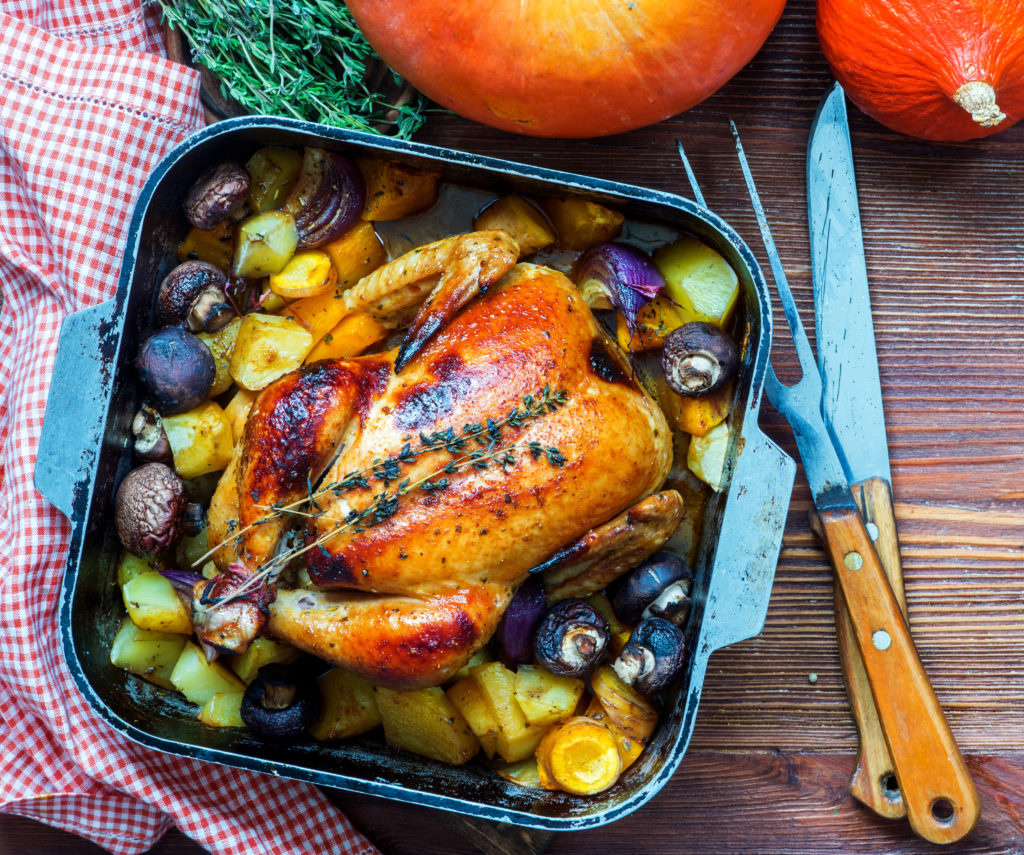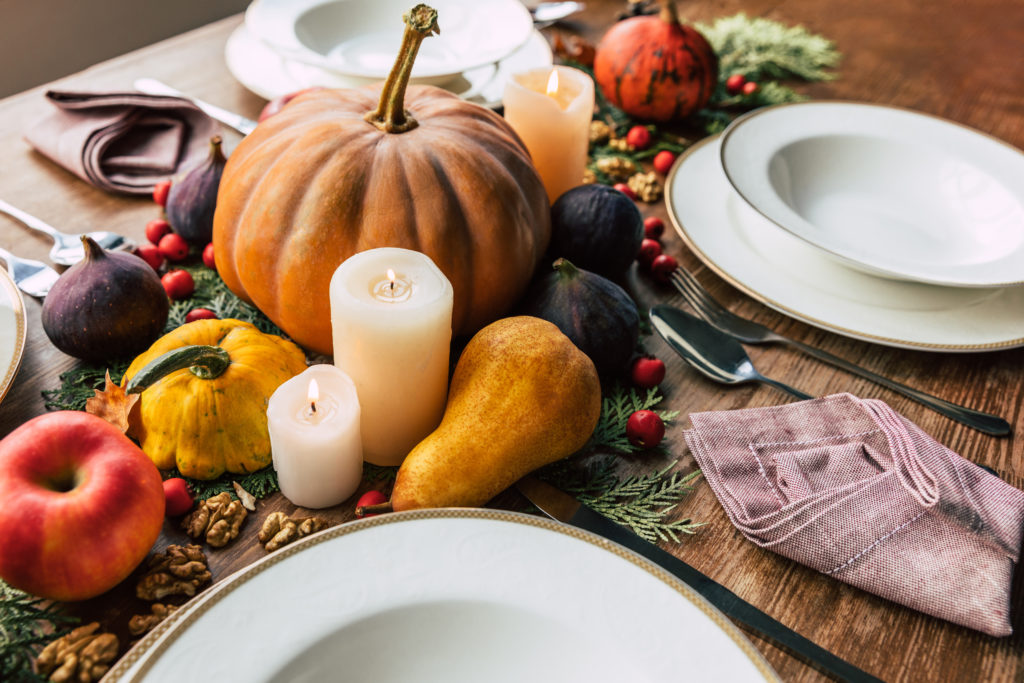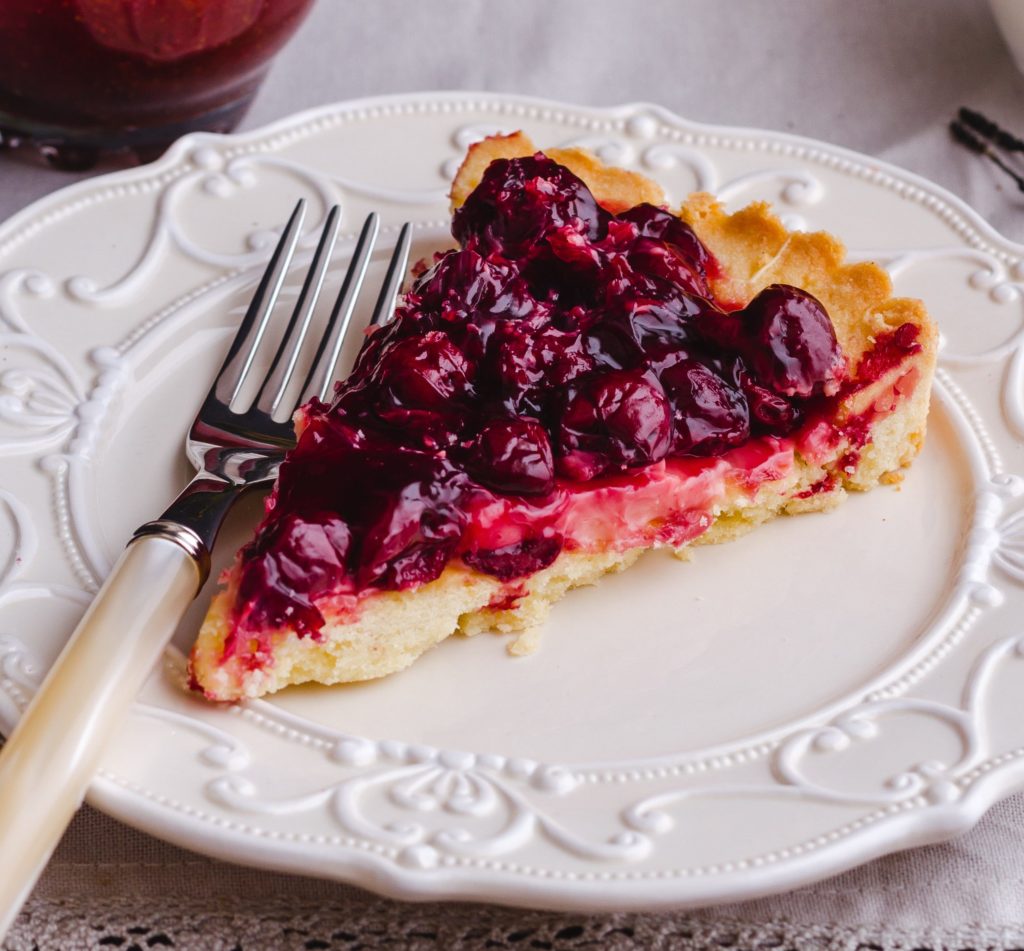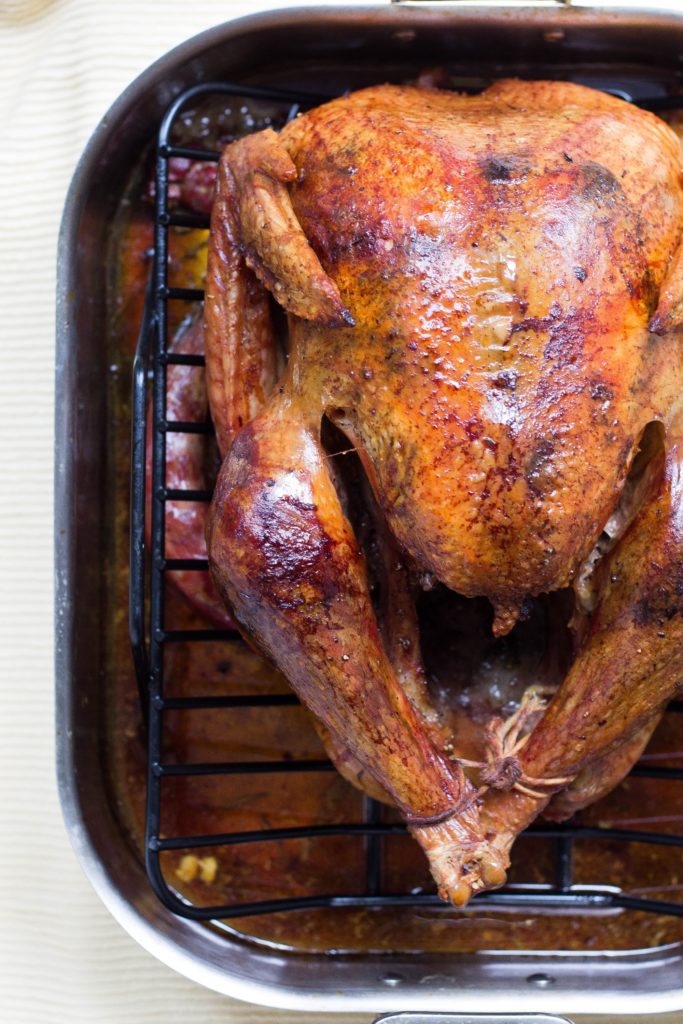You asked, we listened. Follower question of the week.

Q: I’m hosting Thanksgiving this year. How should I go about this to ensure I stay on track, and everyone is happy with the food?
A: As far as nationwide family gatherings go, hosting Thanksgiving is one of the bigger undertakings—whether your own dietary concerns are a top priority or not. Americans take their Thanksgiving food very seriously. And with bigger gatherings, there’s a lot of people—and their preferences, food allergies and personalities—to consider. But you’re important too. Do you go cold-turkey (so to speak) and serve only the leanest cleanest F-Factor fare? (You could…) Do you temporarily throw in the towel and go all out with traditional recipes just because you have to make them anyway? (This is NOT something we will condone!). Balance is key here, and that, as well as pleasing everyone, is an art. To help you with your craft, we’ve broken it down.
PLEASING EVERYONE

The most successful Thanksgiving is one where no one is complaining about the food. The following are MENU PLANNING and TABLE SETTING strategies to help ensure that you have options for both the healthiest, most calorie-conscious eaters, as well as the Thanksgiving Traditionalists aiming for that 3,000 calories-in-one-meal goal, and everyone in between.
Platter that crudités. Swap out calorie-filled store-bought hummus and ranch dressing dips for a homemade lighter option, like this low-fat veggie dip. We promise, no one will notice. Pair it with non-starchy raw vegetables—carrots, peppers, broccoli and cucumbers—which by the way, are a free food on F-Factor. Double bonus: the bright colors provide a fresh pop of color to the appetizer offerings of your Thanksgiving meal.
Serve salad as a first course. Go heavy on the greens and light on croutons, cheese, nuts or dried fruit. Throwing in just 1 cup of croutons and 1/3 cup of dried fruit adds in over 50g of carbs to your otherwise light salad. This course provides something light for the health-conscious to fill up on before the heavier dishes.
Make vegetable sides the star of the show. Try colorful, visually appealing veggie recipes that pack plenty of flavor without the calories (recipe suggestions blow). Place bowls of these different colored sides on the table first, either at the start of the buffet or as the first dishes are passed around the table. This will allow people to cover a good portion of their plates with the healthier, lighter fare before the calorie-dense foods like stuffings and mashed potatoes are served.
Allow people to make their own choices. Gravy and salad dressings should be a choice, not the default. Serve both on the side so that people can add the amount they want.

Pies that are open-faced—AKA topless—are a better option for those watching their waistlines
Keep water on the table. Sipping water throughout the meal slows down eating, making you and your guests feel satisfied before feeling stuffed. Encouraging water drinking is also helpful in preventing the token lush at your table from causing any sort of scene. To make it a little more interesting make an assortment of flavored waters in different pitchers: lemon, cucumber mint, and orange are all light, fresh flavors.
Pace the evening. You may want the day to end, but don’t rush the feast. Even if dessert is a large part of the holiday for you, keep conversation flowing. Allow time to pass between the appetizers, the meal, and the dessert course to promote digestion.
Dessert options. Not everyone wants pie or pumpkin-something. Have plain fruit options, like berries, alongside the traditional cakes and pies. Serve with a low fat whipped cream topping like So Delicious CocoWhip! Light. Or consider a liquid dessert, mulled wine anyone?
As the host, it’s not just the fork that’s in your hand this Thanksgiving, it’s the entire kitchen. You have all the power to make what you serve as healthy as you want. The following are easy ways you can shave some calories, carbs and fat off from the most traditional Thanksgiving recipes, without sacrificing flavor or the the integrity of the dish. DISCLAIMER: most these foods would be considered Step 2 to begin with. These suggestions can make them lighter and healthier, but will not make them into a Step 1 food. Starches are still starches.
 Brine it and bake it. Choose a plain bird over a self-basting bird to lower the sodium content and brine it. By soaking the turkey in a salt and herb bath overnight, it flavors the meat without added calories, and helps keep it moist. To further ensure your bird stays moist, bake un-stuffed, leave the skin on while roasting, and remove from the oven when the internal temperature reaches 170 degrees in the breast. And don’t even bother thinking about frying it—the EMS personnel deserve a holiday too!
Brine it and bake it. Choose a plain bird over a self-basting bird to lower the sodium content and brine it. By soaking the turkey in a salt and herb bath overnight, it flavors the meat without added calories, and helps keep it moist. To further ensure your bird stays moist, bake un-stuffed, leave the skin on while roasting, and remove from the oven when the internal temperature reaches 170 degrees in the breast. And don’t even bother thinking about frying it—the EMS personnel deserve a holiday too!
Greater Gravy. Refrigerate the pan juices so that the fat solidifies. This makes it easier to skim the fat off (and discard) before making the gravy—and can save around 56 grams of fat per cup!
Bake portion control right into your stuffing. Pre-portion stuffing recipes by making “stuffins”—AKA stuffing muffins. Simply bake stuffing as you normally would, but in muffin tins instead of a baking dish.
Mashed Potato Mash Up. Substitute half the potatoes you normally use for mashed cauliflower. Where cauliflower is lighter than potatoes, your dish will be less caloric, and have more fiber. Alternatively, you can forgo the mashed potatoes completely and serve up a cauliflower mash, AKA a Step 1 Approved version of mashed potatoes.
Measure it out. Vegetables are inherently low calorie—until you soak them in oil, that is. Just one tablespoon of oil has 135 calories and 15 grams of fat. Instead of eye-balling it, utilize your measuring cup to avoid using excessive amounts of oil when roasting or sautéing vegetables.
Make mindful substitutions while cooking; replace sour cream with Greek yogurt. Opt for fat-free creamer instead of regular and use unsweetened almond milk in place of other dairy products. When baking, try swapping unsweetened applesauce for oil in a recipe.
Go topless. By making pie recipes that are open faced (i.e. do not have that top layer of crust) you’re actively slimming the recipe down. One slice of pecan pie can is about 500 calories and 30 grams of sugar, meaning there’s over 7 teaspoons of sugar in just one slice! This can be optimized by partially reduced by taking off the top layer of crust. But don’t stop there, take it one step further and go crustless with this recipe.
- Take time in advance of Thursday to schedule out the day—and remember, you need time to shower, change and get yourself together before guests arrive too.
- Do whatever you can ahead of time. Baked goods and casserole dishes, like this recipe, can be made the day before. And to save you time on Thursday, veggies like string beans, cauliflower and broccoli can be blanched (boiled in water for a few minutes and then put into an ice water bath to stop the cooking and maintain the color) the day before too. On Thursday all they need is a quick sauté with whatever seasonings and they’re ready for your table.
- Call on Alexa to set timers and reminders for you, “Alexa, remind me to check on the Turkey at 12pm. And tell me to get in the shower at 3pm” and play your favorite tunes.
- Remember to breathe.
- Be vocal about help. If cooking and cleaning while everyone is lounging around watching football makes your blood boil, speak up and ask for help. If people hanging around the kitchen being backseat drivers doesn’t jive with your Type A personality, open your mouth and direct them elsewhere.
FORGET THEM – HOW YOU’RE STAYING ON TRACK
As deliciously as the food can come out, and perfectly the evening can go (no politics at the table, please!), chances are, you won’t be so thrilled after the meal if you’re feeling as stuffed as the 23 lb. turkey you served just hours before. The following strategies will help you to maintain your good intentions and healthy eating habits—and yes, these tips hold true for those not slaving away prepping the feast too.
THE DAY OF THE FEAST
Eat breakfast. Start Thanksgiving morning as if it were any other day. Skipping breakfast in order to save up on calories is typically counterproductive. Start your day off with a fiber and protein filled breakfast. An egg white veggie omelet with high-fiber crackers, an F-Factor 20/20 waffle or 20/20 smoothie, will provide you with energy and keep you from feeling starved prior to dinner being served.
Spoil your appetite. Regardless of when your Thanksgiving meal occurs, make sure you have a satisfying snack before the meal that includes both fiber and protein. Also make sure you drink plenty of water throughout the day. Dehydration often mimics the symptoms of hunger, and getting your 3 liters will help you avoid overindulging later on.
DINNER TIME
Portion Control. Although this holiday offers extra indulgences, remember that this is one meal. Be mindful of both what you choose to eat and the amount you consume. Do not go up for seconds or thirds. When making your plate, stick to the recommend portion of protein—6 oz. for men, 3 – 4 oz. for women. And keep the 3-bite rule in mind when having non-F-Factor desserts.

Flavoring water with lemon and mint will encourage everyone to hydrate more.
Peace out overeating. Imagine your plate divided into thirds (like a peace sign). Use the first third to fan out white meat turkey (remember, white meat trumps dark as it’s lower in calories and saturated fat), no skin. Use the second third for a salad and low-fat vegetables. Finally, the last third is for all the starches (sweet potatoes, stuffing, and cranberry sauce.)
Drink more water. As always, water will help fill you up and staying adequately hydrated will help keep everything you’re consuming moving along.
AFTER DINNER AND BEYOND
Divvy up the leftovers. Out of site, out of mind. Send guests home with leftovers. You don’t need excessive amounts of temptations crowding up your refrigerator!
Get out of the kitchen and go relax. You were a rockstar today, reward yourself by kicking your feet up and getting a good night’s sleep.
THANKSGIVING FEAST RECIPE ROUND UP
